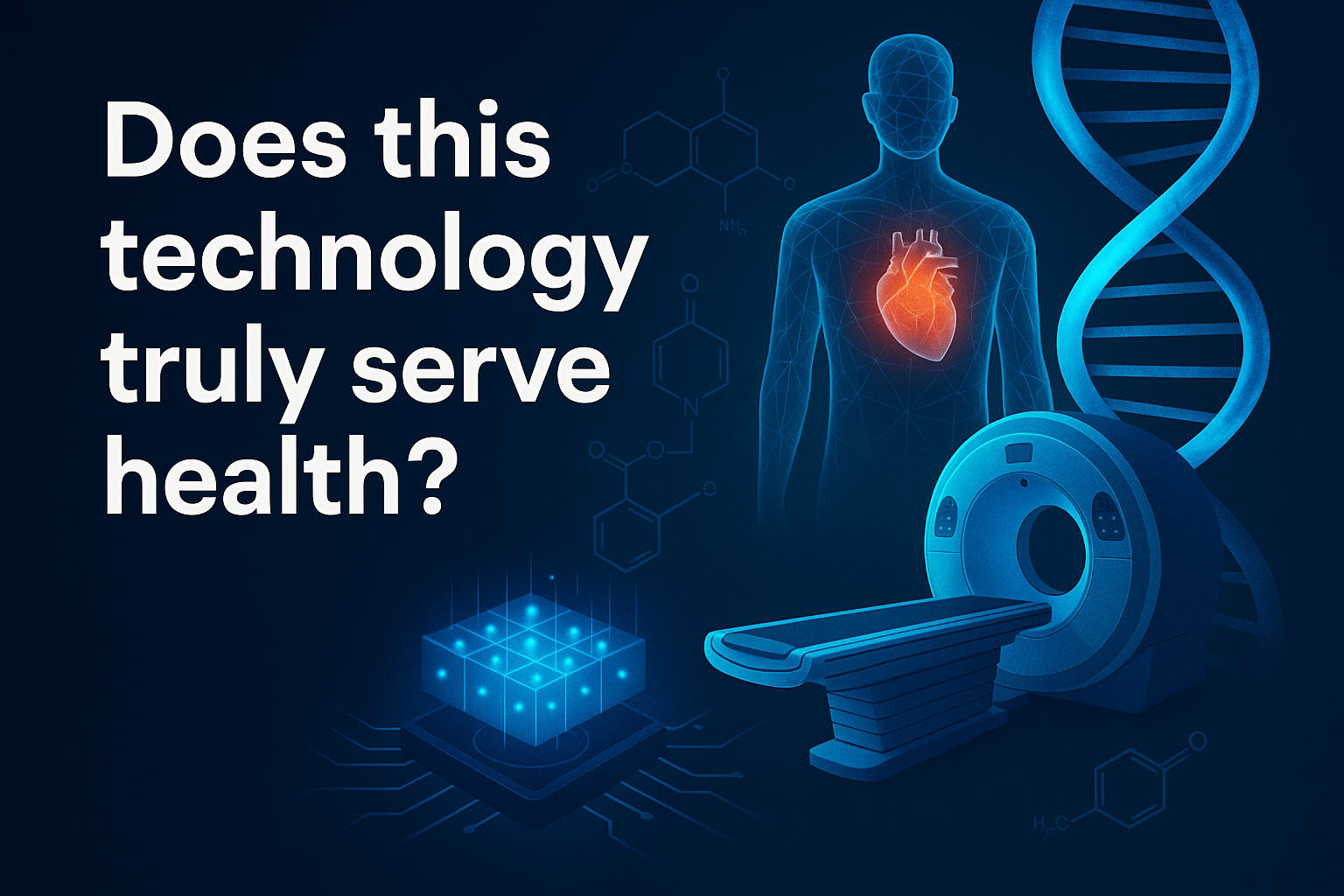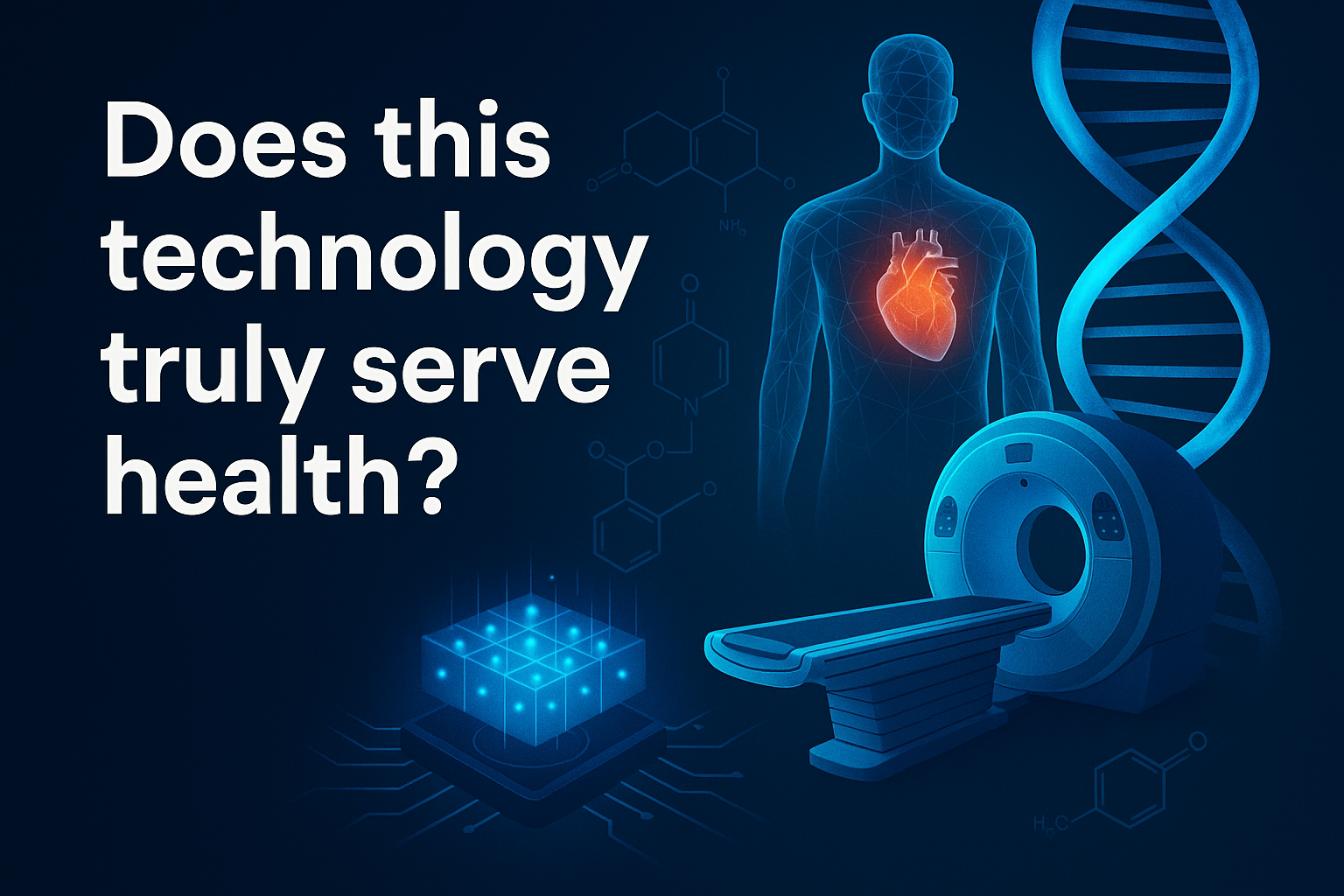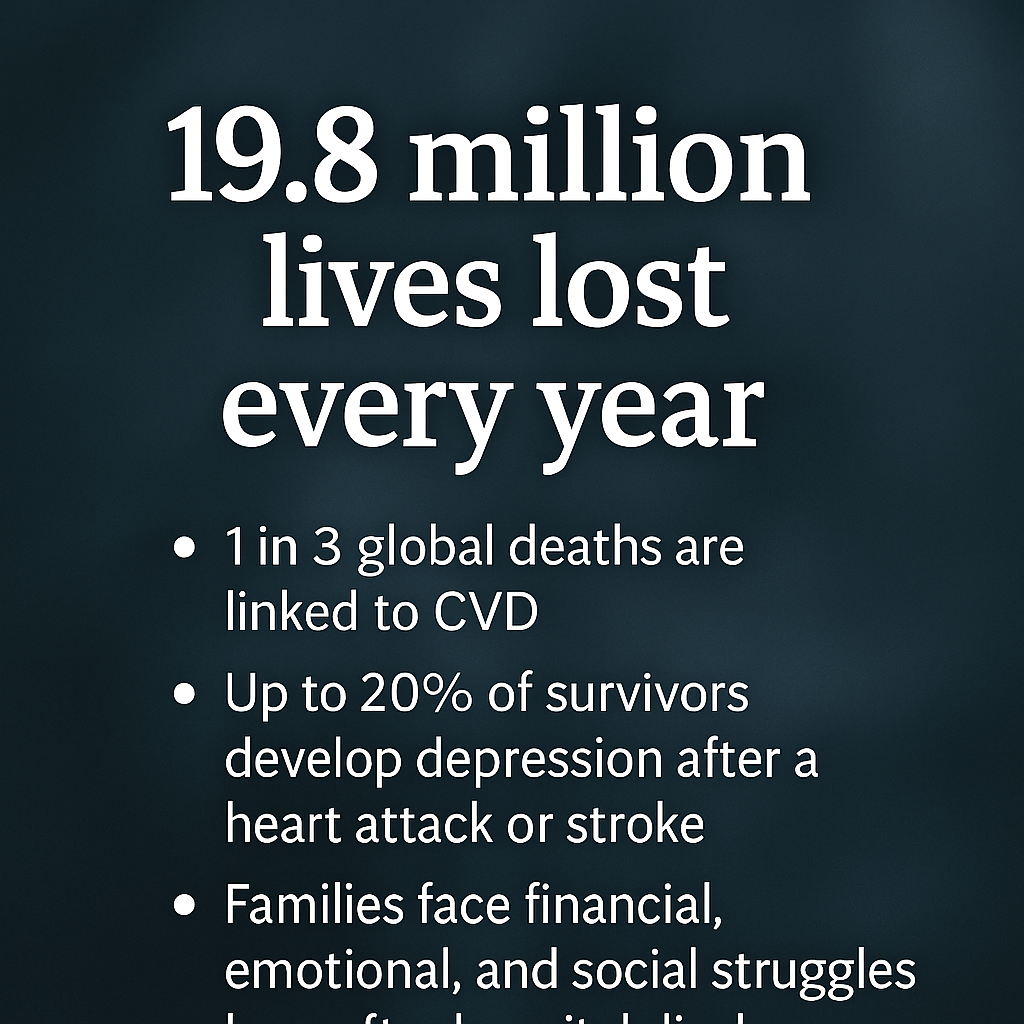
Advanced technologies are not a luxury; they amplify human capabilities.
Quantum sensing and imaging.
Technologies such as quantum magnetometers and diamond NV-center sensors are being developed for better diagnostics and molecular-level detection. See this broad review:
https://www.nature.com/articles/s42254-023-00558-3
These approaches build on well-established quantum principles already used in MRI, recognized by the 2003 Nobel Prize in Physiology or Medicine:
https://www.nobelprize.org/prizes/medicine/2003/press-release/
Drug design and genomics.
Quantum-inspired methods may accelerate molecular simulation and decision-making in discovery pipelines. The potential is real, but most work is still pre-clinical and should be validated step by step.
Imaging advances.
Quantum-enhanced MRI and other low-noise modalities could improve contrast and resolution. Promising prototypes exist, but clinical translation requires careful testing.
Bottom line: quantum and adjacent technologies are not fantasy; they are the next evolution of applied physics in health. The path, however, demands rigor.
The Dark Side: Risk, Hype & Unintended Consequences
Whenever profit, speed, or overconfidence override caution, technology can backfire.
Gene therapy and cancer risk.
Early trials using retroviral vectors for SCID-X1 showed cases of insertional mutagenesis leading to leukemia (NEJM, 2003):
https://www.nejm.org/doi/full/10.1056/NEJMoa022744
The U.S. FDA maintains safety guidance on cellular and gene therapy products, including vector toxicities, immune activation, and off-target effects:
https://www.fda.gov/vaccines-blood-biologics/cellular-gene-therapy-products
CAR-T and severe adverse events.
CAR-T therapies can be life-saving but also cause serious toxicities such as cytokine release syndrome and neurotoxicity. Overview (NCI):
https://www.cancer.gov/about-cancer/treatment/research/car-t-cells
Quantum’s current gaps.
Many “quantum-health” applications remain early-stage: simulation-heavy, hardware-limited, and not yet validated in clinical practice. Overpromising creates hype cycles that distract from foundational science.
Guardrails for Responsible Deployment
To ensure technology truly serves health, we need structural safeguards:
- Rigorous trials and transparency. Publish negative outcomes, adverse events, and long-term follow-up — not only successes.
- Incremental deployment. Start small, monitor closely, scale only after validated safety signals.
- Explainability and auditability. Quantum and AI systems used for care should provide interpretable outputs; clinical decisions cannot rely on black boxes.
- Ethics and governance. Regulators must address overlaps between quantum, AI, and biotechnology, with clear frameworks for privacy, consent, and liability.
- Education and literacy. Clinicians, policymakers, and the public need baseline literacy in these technologies to avoid misuse and to build trust.
Conclusion: Serve, Don’t Lead Blindly
Yes — technology can profoundly improve health. Quantum and genetic science already power imaging, diagnostics, and discovery. But ambition must never outrun safety. As we scale new tools, humility, measured pace, transparency, and vigilance must guide our strategy.
The hallmark of a health-serving technology is not just what it can do — but how safely and ethically it does it.





Comments